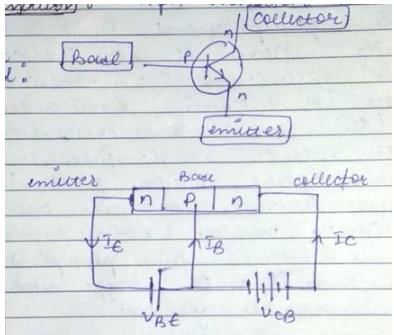Test: Transistors - JEE MCQ
Test Description
10 Questions MCQ Test - Test: Transistors
Test: Transistors for JEE 2025 is part of JEE preparation. The Test: Transistors questions and answers have been prepared
according to the JEE exam syllabus.The Test: Transistors MCQs are made for JEE 2025 Exam.
Find important definitions, questions, notes, meanings, examples, exercises, MCQs and online tests for Test: Transistors below.
Solutions of Test: Transistors questions in English are available as part of our course for JEE & Test: Transistors solutions in
Hindi for JEE course.
Download more important topics, notes, lectures and mock test series for JEE Exam by signing up for free. Attempt Test: Transistors | 10 questions in 10 minutes | Mock test for JEE preparation | Free important questions MCQ to study for JEE Exam | Download free PDF with solutions
Test: Transistors - Question 3
For functioning of a transistor its emitter-base junction has to be:
Detailed Solution for Test: Transistors - Question 3
Detailed Solution for Test: Transistors - Question 4
Test: Transistors - Question 5
For functioning of a transistor its collector-base junction has to be:
Detailed Solution for Test: Transistors - Question 5
Test: Transistors - Question 6
A transistor is used in the common-emitter mode as an amplifier. Then
Detailed Solution for Test: Transistors - Question 6
Detailed Solution for Test: Transistors - Question 7
Test: Transistors - Question 8
An n-p-n transistor is biased to work as an amplifier. Which of the following statements is not correct?
Detailed Solution for Test: Transistors - Question 9
Test: Transistors - Question 10
In an n-p-n transistor, the majority carriers in the emitter and collector are :
Detailed Solution for Test: Transistors - Question 10
Information about Test: Transistors Page
In this test you can find the Exam questions for Test: Transistors solved & explained in the simplest way possible.
Besides giving Questions and answers for Test: Transistors, EduRev gives you an ample number of Online tests for practice
Download as PDF















